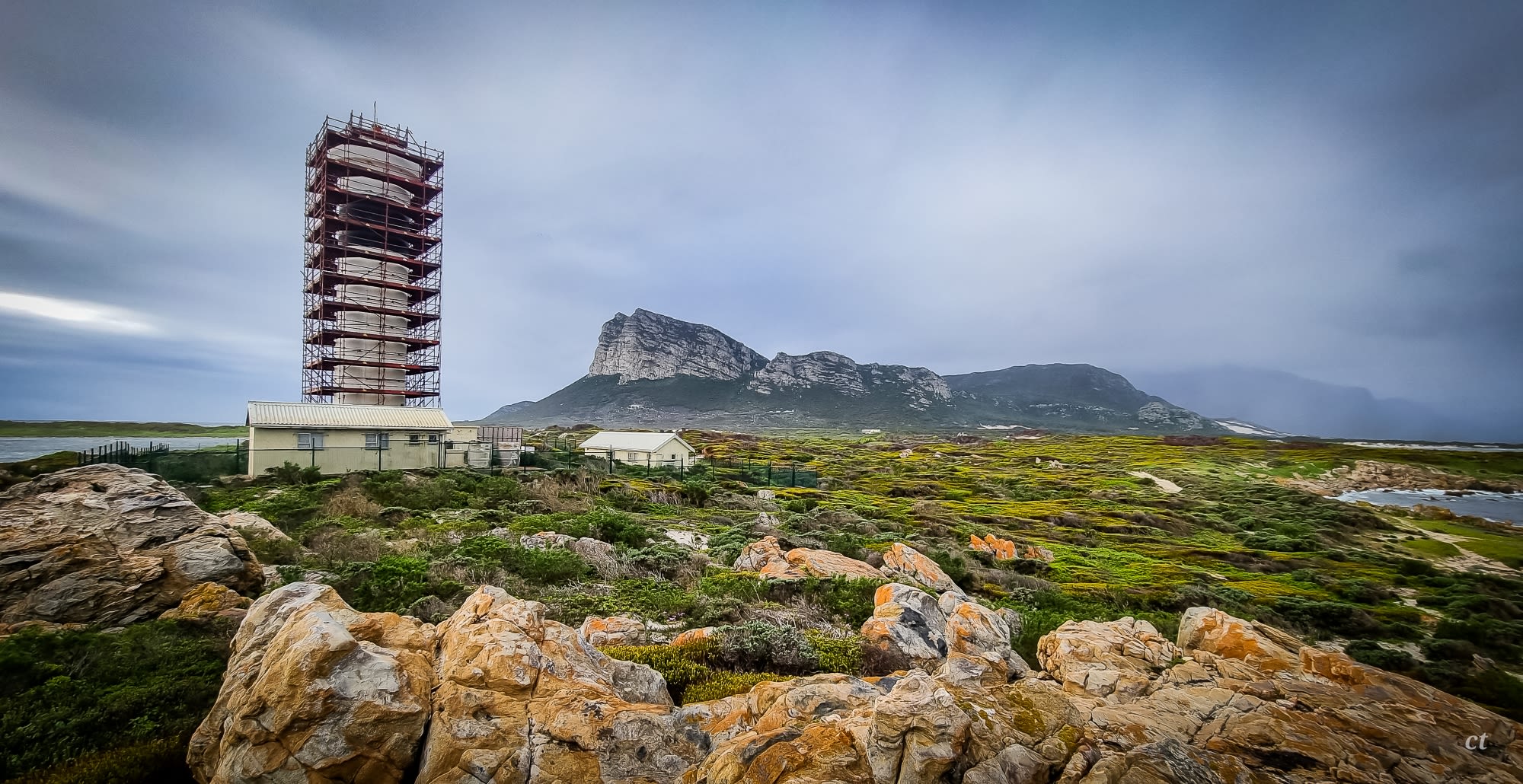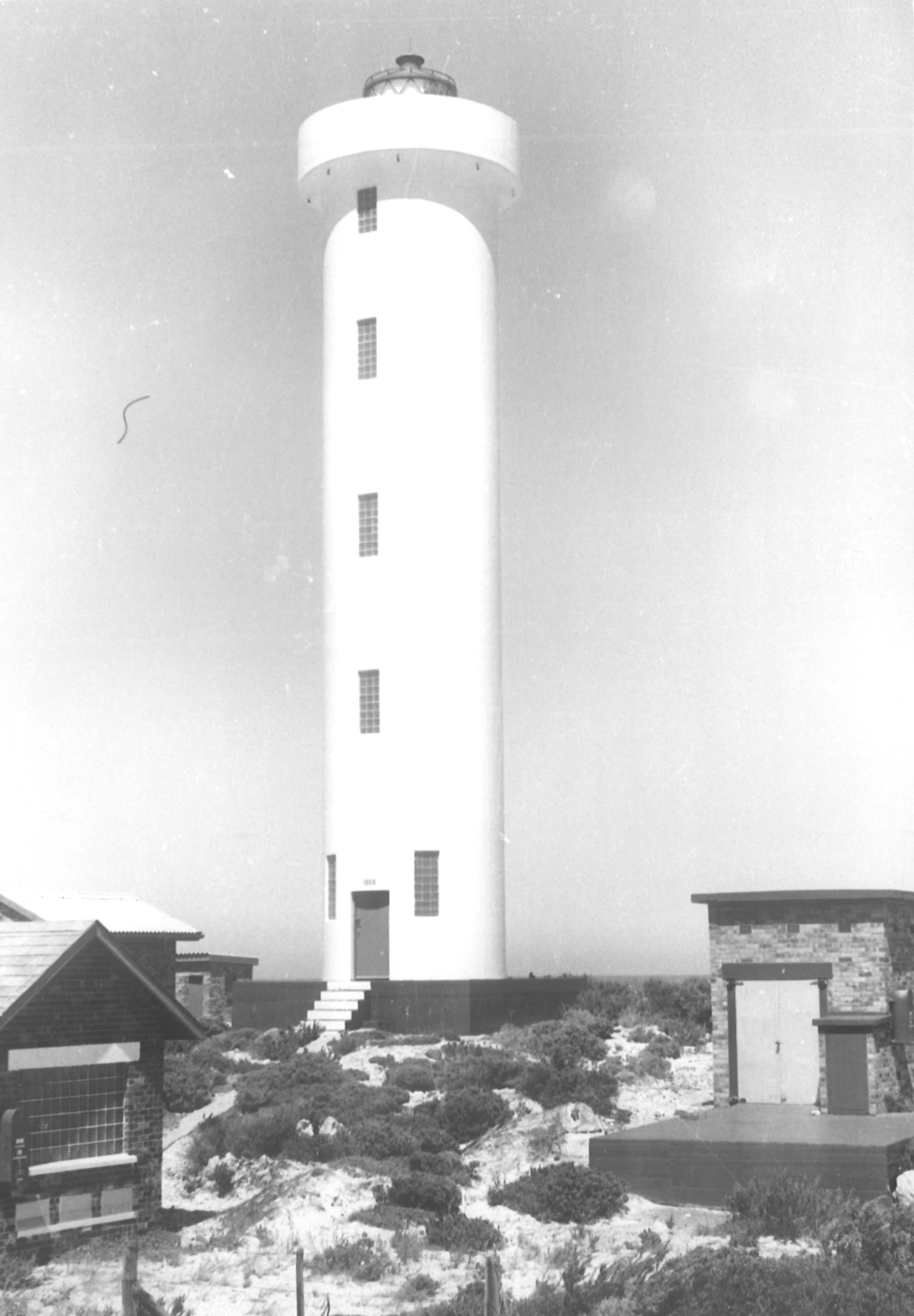
Story by Fanie Krige. Picture by Cristoff Theunissen
HANGKLIP – Over the past few weeks readers noted that something strange is going on at the Cape Hangklip Lighthouse. One person said from Clarence Drive in Betty’s Bay the tower looked shrouded and photos on social media confirmed that a massive construction of scaffolding was surrounding it.
The Overstrand Herald went to investigate and what a battle it was to get there … to find nobody on site.
Fortunately, a call to Portnet’s Lighthouse and Navigational Services’ head office at Mouille Point in Cape Town put us in contact with the helpful Tamsyn-Anne Atkinson, who assisted in getting us the following official response of Transnet National Ports Authority (TNPA) on our questions.
The answers not only revealed that a major refurbishment project at an estimated cost of R1 million is being undertaken, but also confirmed that such structures still play a vital role in assisting vessels in navigating our 2800 km long coastline safely.
Question 1: What does the current project entail?
The project entails painting the outside of the Cape Hangklip Lighthouse tower and lantern house.
Question 2: Was it contracted out or is in being done in-house by your technical staff.
The painting is being undertaken by TNPA employees.
Question 3: Who is the contractor or staff member in charge?
Mr Ikeraam Matthews, Operations Supervisor at TNPA, is project manager for this painting project.
Question 4: What is the expected cost of the project?
The expected project cost is R1 million.
Question 5: When last was the lighthouse refurbished and how regular is it done?
Cape Hangklip Lighthouse was last refurbished in 2016. This type of project is usually undertaken every five-to-seven years.
Question 6: Are there any challenges expected. I went out there and found the road to Masbaai in a very bad state, even with a river flowing over it. I suspect if there is sensitive equipment to be transported their special arrangements will have to be made.
The project team is experiencing weather-related challenges that are associated with winter such as flooding after heavy rain and strong winds.
Question 7: Are there any changes to be made, for example signal strength, solar power, etc.
There will be no changes to the lighthouse – neither the outward appearance, nor the character of the light. A solar photovoltaic (PV) system was installed last year.
Question 8: How important is the Hangklip Lighthouse in terms of maritime safety? Who is mostly served: larger vessels or the fishing industry.
The Cape Hangklip Lighthouse is one of 44 operational lighthouses along the South African coast that serve the maritime community. The colours of the lighthouse tower and lantern house act as a day marker for passing vessels and the character of the light signals vessels at night.
TNPA is mandated by the National Ports Act, 2005 (Act No. 12 of 2005) to provide, operate and maintain lighthouses and other marine Aids to Navigation (AtoNs) to assist the navigation of vessels within commercial port limits and along the coast of South Africa.
A marine AtoN is defined as: “A device, system or service, external to vessels, designed and operated to enhance safe and efficient navigation of individual vessels and/or vessel traffic.” Lighthouses, beacons, and buoys are the most common types of visual AtoNs. Virtual AtoNs are new technologies that use digital signals to warn of dangers in specific locations, without the need for physical buoys or lighthouses. The digital signals are transmitted from Automatic Identification System (AIS) stations and are received by AIS units on board.
Large vessels – such as container ships and passenger ships – are required to carry AIS in terms of International Maritime Organisation regulations, but smaller vessels are not. Therefore, visual marine AtoNs cannot be done away with. TNPA AtoNs conforms to the standards set by the International Association of Marine Aids to Navigation and Lighthouse Authorities (IALA). South Africa, represented by TNPA, is a founder member of IALA.
Question 9: Any other relevant information on the history of the lighthouse or the project that is being undertaken?

Originally, the tower was painted white. (Photo provided by TPNA)
Originally, the tower was painted white. (Photo provided by TPNA)
Cape Hangklip Lighthouse was commissioned on 25 November 1960. The 22-metre circular concrete tower is painted white with a black band and has a red lantern house. Originally, the tower was painted white. The rotating lens system produces one flash every 10 seconds.

It was the first fully automated South African lighthouse to have its own automatic diesel electricity-generating plant. (Photo provided by TPNA)
It was the first fully automated South African lighthouse to have its own automatic diesel electricity-generating plant. (Photo provided by TPNA)
It was the first fully automated South African lighthouse to have its own automatic diesel electricity-generating plant. It was converted to a solar-powered station in 2022, but it still has a standby diesel generator.

Cape Hangklip Lighthouse was first lit on the night of 25 November 1960. The 22-metre circular concrete tower is painted white with a black band and has a red lantern house. (Photo provided by TPNA
Cape Hangklip Lighthouse was first lit on the night of 25 November 1960. The 22-metre circular concrete tower is painted white with a black band and has a red lantern house. (Photo provided by TPNA
Cape Hangklip Lighthouse is one of 19 operational lighthouses along the Western Cape coast. The other 18 lighthouses are: Cape Agulhas, Cape Columbine, Cape Infanta, Cape Point, Cape Seal, Cape St Blaize, Cape St Martin, Danger Point, Dassen Island, Doringbaai, Milnerton, North Head, Quoin Point, Robben Island, Roman Rock, Slangkoppunt, South Head, and Ystervarkpunt.
